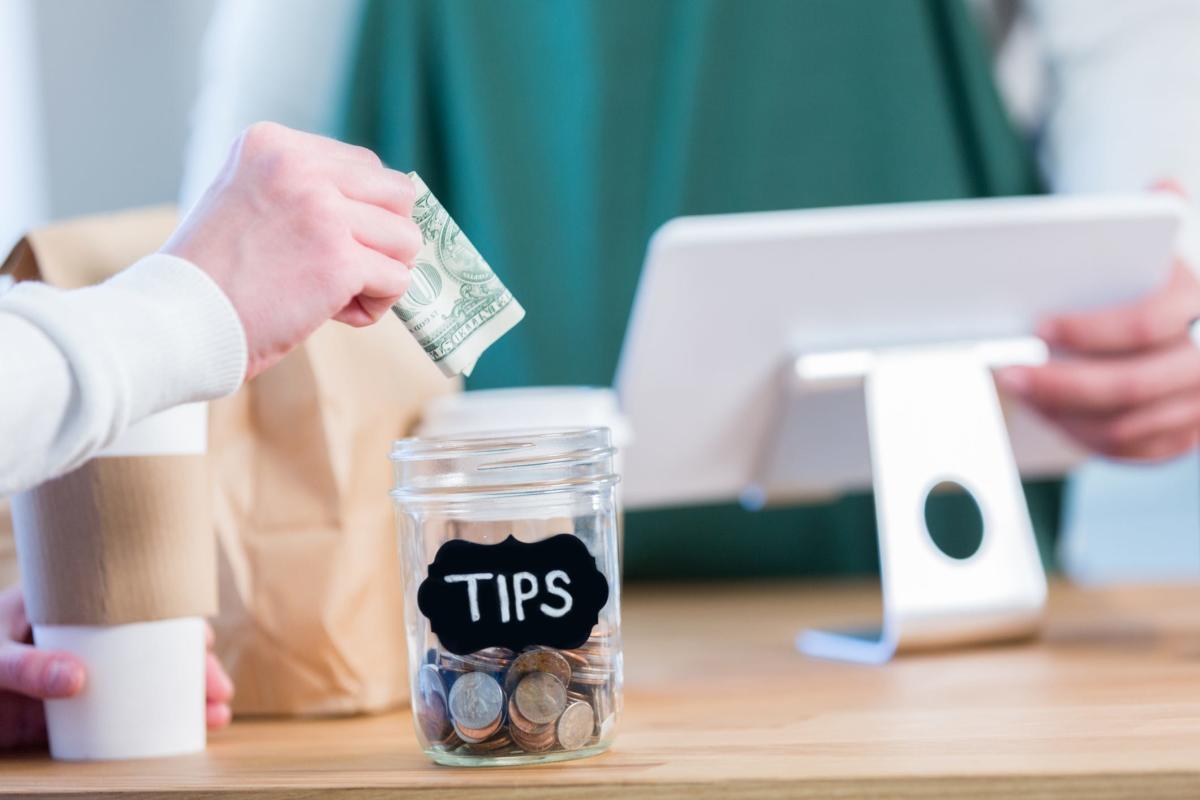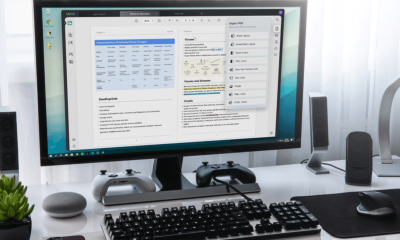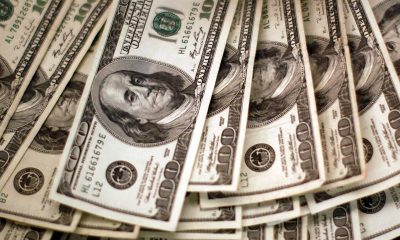Personal Finance
Are we reaching a ‘tipping’ point? You’re not imagining it. How businesses get you to tip more

When Darryl Tom ate at a brewery in suburban Chicago recently, he bought a couple of expensive bottles of barrel-aged beer, a sandwich to go, plus a beer while he waited. The bill came to $80 and the lowest suggested tip displayed on the restaurant’s iPad was 20%, or $16.
The request felt egregious on multiple levels, said Tom, an attorney who knows his tipping etiquette. Not only was there little to no service but the amount was calculated on the after-tax total.
Conventional etiquette doesn’t require a tip for takeout. But if the order is large, complicated, or brought to you curbside by staff, then a 10% gratuity is fine, experts say. And tipping is always off the pre-tax amount, generally 15% to 20% for sit-down meals.
Tipping requests have exploded in the past couple of years. Everywhere you go, a jar, a receipt, or a checkout screen displays a suggested amount, pressuring you to tip. Businesses often automatically ask for tips — even if it’s not warranted — and include a “helpful” guide with different percentages to make the math easier.
But buyer beware: those prompts could lead to overtipping, experts say.
How are businesses raking in more tips?
DoorDash warns customers now that if they don’t include an upfront tip for their delivery drivers, they should expect longer waits for their orders. That change caused a ruckus on social media, with some customers asking why they should tip before knowing if they’ll get good service or if they should even be the ones bearing the brunt of paying wages for DoorDash.
“Historically, tips were designed for services well performed,” said Rob Burnette, chief executive and investment adviser at financial planning firm Outlook Financial Center in Troy, Ohio. “But it’s morphed into an expectation by servers not just to tip, but tip generously or they’ll call you out.”
Other ways businesses are pulling in bigger tips:
-
Calculating tips on the after-tax, instead of the pre-tax, total: Tipping should be pre-tax because tax rates vary from city to city, Burnette said.
-
Calculating tips with fees, like a credit card processing fee, included.
-
Calculating tips on after-tax amount AND with fees included.
-
Including a suggested tip guide based on after-tax, after-fee, and after an automatic gratuity has been added.
-
Asking for tips when there’s little to no service like at a coffee shop counter or when customers pick up a takeout order.
Why are businesses asking for more tips?
After more than two years of high inflation, businesses are feeling squeezed and looking for ways to pass on expenses by charging credit card processing fees and requesting more tips for staff, experts say.
How does asking for more tips help businesses?
If workers earn bigger tips, then businesses may not have to pay higher wages.
Servers, for example, are often paid less than minimum wage because of the expectation that their tips would push them to or above minimum wage. If they don’t earn enough to reach minimum wage, the law requires the business to make up the difference. More tips would mean smaller or no disparity that the company needs to remedy.
What if places just paid their workers more?
Places like California, Minnesota, Washington, and Washington, D.C., require businesses to do just that, and the city of Chicago recently passed a measure to increase the minimum wage for tipped workers.
“Tipped workers in states that eliminated the subminimum wage enjoy higher earnings, face less harassment on the job, and are less likely to live in poverty,” according to Human Rights Watch, citing studies from The Economic Policy Institute, the One Fair Wage campaign, and others.
Others have argued that wages may have risen for those workers, but tips fell. “Paying tipped workers higher wages decreases the tip percentages those workers receive,” Michael Lynn, professor at the Cornell University School of Hotel Administration, wrote in a 2020 study.
Consumers, however, might expect higher prices. Eighty percent of the 315 Chicago restaurant owners surveyed by the Illinois Restaurant Association in August said they’d raise menu prices and 89% said they might introduce automatic service charges or fees to customer checks.
Where are the big tippers? Tipping point: Best and worst states for tips
What’s a customer to do?
Check your receipts, do your own math instead of relying on the “suggested tips” and know tipping etiquette.
“It’s a personal call if you want to tip a lot,” Burnett said. “If you got good service, take care of your server.”
Tom, the brewery customer in Chicago, left a tip. But he gave a “’custom tip” of $6, instead of the suggested $16.
Medora Lee is a money, markets, and personal finance reporter at USA TODAY. You can reach her at mjlee@usatoday.com and subscribe to our free Daily Money newsletter for personal finance tips and business news every Monday through Friday.
This article originally appeared on USA TODAY: Is tipping culture out of control? How ‘suggested tips’ drain wallets
Read the full article here

-

 Side Hustles5 days ago
Side Hustles5 days ago5 Things That Could Significantly Impact Your Company in 2025
-

 Investing5 days ago
Investing5 days agoNFI Group surge after board reshaped with new appointments, chairperson By Investing.com
-

 Side Hustles6 days ago
Side Hustles6 days agoHow Failing 22 Times Paved the Way to My Success
-

 Passive Income4 days ago
Passive Income4 days ago3 Challenges Entrepreneurs Will Face in 2025
-

 Investing6 days ago
Investing6 days agoChinese hack of US telecoms compromised more firms than previously known, WSJ says By Reuters
-

 Investing6 days ago
Investing6 days agoApple Siri Settlement: Who Is Eligible for a Cash Payout
-

 Side Hustles6 days ago
Side Hustles6 days ago3 Strategies to Make Your Next Campaign Go Viral
-

 Make Money2 days ago
Make Money2 days ago10 Critical Questions to Ask Your Financial Advisor Now


















